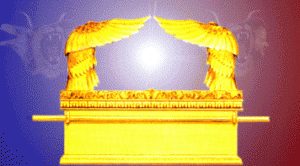HOMILY WEEK 17 04 – Year I
Living Tabernacles and Mutual Indwelling –
Memorial: St. Martha
(Ex 40:16-38; Ps 84; Mt 13:47-52)
*********************************************
The readings invite us to be tabernacles of God’s presence in the world as we dwell with God and God with us in Christ.
When our pilgrim group was in the Holy Land, we were able to visit Shiloh, where the Israelites first built a semi-permanent tabernacle after 39 years of wandering in the wilderness with a portable one, described in the first reading from Exodus today. The uniqueness of this event underpinning all of Judaism, and our Judeo-Christianity, is worth studying more closely.

Ark of the Covenant
Moses was instructed by God to set up a tabernacle “on the first day of the month.” To properly understand this, we should think of a that tabernacle as a “portable chapel.” In that chapel (tabernacle) Moses placed the ark (a tabernacle to us) into which he placed the covenant (the Dabar, Words of God, Ten Commandments). This would be the reserved Eucharist for us today. Above the ark he placed the mercy seat, a very interesting feature with two cherubs guarding an empty space in between them, which I believe is really where God was considered to dwell. Think of a monstrance today.
Then Moses was commanded to set up a curtain to screen this whole set-up, a precursor to the heavy curtain in the later temples separating the Holy of Holies from the rest of the temple. Finally, the glory of the Lord filled the tabernacle (chapel) so much so that Moses was not able to enter the “tent of meeting” because of the cloud and the glory or shekinah of the Lord. Apparently all this was placed within that tent of meeting where God spoke to Moses “face to face.”
Finally, a cloud was on the tabernacle by day and a column of fire by night, and whenever they were “taken up from the tabernacle” the Israelites would continue their journeying through the wilderness, guided by that cloud and fire (think sanctuary lamp today).
What we have here is an extra-ordinary spirituality setting the Israelites apart from other nations – an intimate relationship with God who dwelt among them and journeyed with them on a daily basis. They were to respond to that presence by being an icon of who God is on earth, to draw all peoples to this loving although also fearsome God.

Raising of Lazarus
Turning to the gospels for today, we often think of St. Martha as an example of what we shouldn’t do. When she hosted a dinner for Jesus, she was the one serving at table, “anxious and worried about many things” (Luke 10:41). It was her sister Mary, sitting at the feet of Jesus in the posture of a disciple, who had chosen the “better part” (Luke 10:42). Actually, Martha’s problem was not that she was busy. It is more that she was agitated, anxious and worried, and not at peace in doing what she was doing. She was not centered and had lost her peace of mind.
St. Augustine has a word of advice for Martha: “No, there will be none of these tasks there. What you will find there is what Mary chose. There we shall not feed others, we ourselves shall be fed. Thus, what Mary chose in this life will be realized there in all its fullness; she was gathering fragments from that rich banquet, the Word of God.”
In today’s optional gospel, Martha is somewhat vindicated. We meet a more mature Martha. She is not so overcome by worry. She recognizes that God is working through Jesus, and she believes that God will give Jesus whatever he asks (John 11:22). She hasn’t yet grasped that he can raise Lazarus from the dead, but she believes that Jesus is the Messiah. She recognizes that he comes from God, and this strengthened her faith.
In this story, Martha’s faith starts out as the ability to trust God. We might find trust like that difficult, especially if, like Martha, we have just experienced deep loss. But we can learn from her. She found hope in the promise of resurrection for her brother. She saw that her fears and worries were nothing compared to the power of Jesus, so she put all her trust in him. Actually, her profession of faith – “You are the Messiah, the Son of God, the one coming into the world” – is rather amazing, on a par with that of Peter at Caesarea Philippi, and close to that of Thomas in the upper room. We can do that too. Even if we still feel fear, we can be confident in Jesus, who conquered death and lives forever.
Faith is more than passively trusting in God – it is actually believing that God can do miracles. Martha can help us understand this type of faith. She came to believe that Jesus could do anything, and she told him so. We can do that too, by asking God for help in a challenging situation. We can ask God for a miracle – healing of a love one, the conversion of a friend or family member, a new job. Ask in confidence, but also trust that Jesus in his wisdom will answer our prayer in the best way possible. Exercising our trust and faith like this will help us grow closer to Jesus.
The Eucharist is really the mercy seat, that place where God dwells with us and within us, where we experience the mercy of God as forgiveness and healing through word and sacrament.
May our celebration make us living tabernacles mutually indwelling with God, and empower us to be true icons of God on earth, drawing all people back to the Father through Jesus the Son, in the Holy Spirit, with Mary our Mother.



